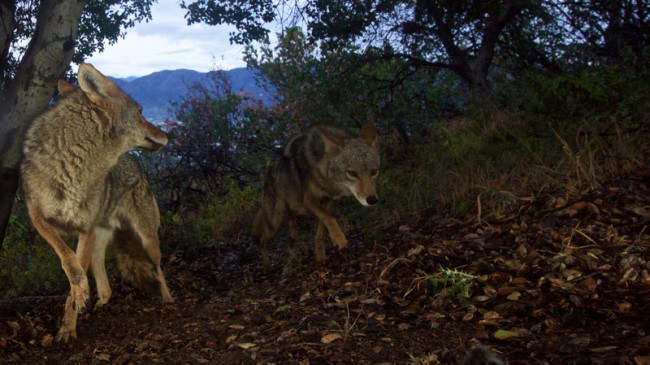Adventure
With Spring Come Coyotes; Protect Your Pets

When coyotes come calling, tell them Fido’s not home.
Groundhog, schmoundhog: Spring is here when the coyotes are.
It isn’t spring in most of the country, but if you’d like to know what’s on tap for this April or May, just look to our southernmost state: Florida. The songdogs are coming out as the state warms, and the Florida Fish and Wildlife Conservation Commission (FWC) is reminding Florida residents and visitors to protect pets and livestock from coyotes. That warning isn’t just for Floridians; it’s for anyone who lives through the Eastern U.S.–even urbanites.
What a lot of people don’t know is that Eastern coyotes aren’t exactly coyotes anymore. Although they originated as the spindly Wile E. types you’ll find out West, the ones they have in the East have been breeding with red wolves and feral dogs. That means they’re larger and more aggressive.
How aggressive? That depends on whether you’re dealing with one coyote or a pack of them. It also depends on how long those animals have been in your community and whether they have lost their fear of humans. Although your primary worry should be to protect your pets from coyotes, they can and do attack people.
To help avoid conflicts with coyotes and other predators, take proactive measures by removing food sources including unsecured trash and pet food, and securing pets and small livestock as they can become prey to coyotes. These actions will help protect your animals and help deter coyotes from repeatedly coming into your yard or community.
Unaccompanied small pets such as dogs and cats that are left outdoors can be preyed upon by wildlife. Protect small pets by keeping them indoors or in an outdoor predator-proof pen.
“Cats should be kept inside for their protection as well as to protect songbirds and other native wildlife cats prey upon,” suggests Greg Kaufmann, FWC Wildlife Assistance Program Administrator. “When walking dogs, keep them on a short leash, especially at night, dusk or dawn, and be extra careful when walking your pet in wooded areas.”
People should also take necessary precautions to shelter animals, such as goats, sheep, calves, pigs, poultry and other small livestock, from coyotes and other predators. Small livestock can be protected by keeping them in a secure fenced enclosure with a roof. Yes, it needs a roof…coyotes can climb remarkably well. Electric fencing is also an effective deterrent to prevent wildlife from preying on domestic animals.
Here are additional tips for preventing conflicts with coyotes:
- Never feed coyotes and do not place food outside that will attract coyotes or other wildlife. It is illegal to feed coyotes in Florida in a manner that is likely to create or creates a public nuisance.
- Clean up pet food, fallen fruit and seed around bird feeders – coyotes are opportunistic feeders and can be drawn to these types of food sources.
- Secure garbage cans and compost in animal-proof containers.
- Encourage wildlife to nest or den in natural areas by closing off crawl spaces under houses and other buildings to prevent them from resting or raising their young in areas around your home.
- Talk with your neighbors and ask them to follow these same steps.
- Coyotes are fur-bearing animals that can be hunted (sometimes without a license), and whose thick winter pelts are worth money.




